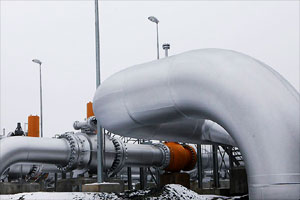The Cabinet Committee on Economic Affairs (CCEA) on Wednesday kicked off the much-anticipated revenue-sharing model for hydrocarbon contracts by announcing that the same will be used while auctioning 69 marginal oil and gas fields over the next three months. Petroleum minister Dharmendra Pradhan said these 69 fields, given up by PSU explorers ONGC and Oil India, possessed trapped resources worth Rs 77,000 crore at current prices and their extraction would help cut India’s annual oil import bill by Rs 3,500 crore.
Analysts see the government’s move as a precursor to adopting the revenue-sharing model for larger fields as well.
The Centre could either usher in the open acreage policy or opt for the tenth round of new exploration and licensing policy (Nelp) auctions for the mainstream hydrocarbon fields soon.
As per the CCEA decisions for the 69 marginal fields, the successful bidders for them would have the freedom to sell crude oil or natural gas at ‘market-determined prices” sans any government interference. Moreover, the bidders would be given the right to sell gas to customers of their choice, unencumbered by the government’s allocation policy. Other than crude oil and gas, the firms would also be free to commercially exploit unconventional resources such as shale oil and gas, if they find any, in these fields. “We have made a paradigm shift from cost-recovery model to revenue-sharing. At the same time, we have decided to implement unified licensing regime. This is a primary step towards ease of doing business,” Pradhan said.
Hinting at the prolific investment opportunity, Pradhan cited the example of the Cairn India-operated Mangala field in Rajasthan’s Barmer block, which was discarded by ONGC as non-prolific. “Today, the field produces about 20-25% of country’s crude oil output,” the minister noted.
Deepak Mahurkar, leader, oil & gas, PwC India, said: “Departing from the past, discovered blocks of the national oil companies are being relinquished to have them developed by operators who are confident of cost-efficiency and small-size operations. If this step by the government bears fruit, the energy security agenda will get serviced substantially.”
DK Saraf, chairman and managing director, ONGC, said: “The economics for us would be different compared to the nomination regime, so we would consider on a case-by-case whether it works for us or not.” He added the prices of crude oil and natural gas were expected to rise in a couple of quarters or latest in a year or two and this would make these fields even more viable. The currently proved reserves in these 69 fields stand at 88 million tonnes of oil and oil equivalent.
In the revenue-sharing regime, the bidders will have to indicate the quantity of oil and gas they will share with the government at various stages of production along with the rates. So, the government’s remuneration is delinked from the quantum of investment made in developing the block and extracting the hydrocarbons. Under the present production-sharing contract (PSC) system, applicable for blocks auctioned under all the previous Nelp rounds, an explorer gets to recover costs incurred during the exploration cycle, before sharing profits with the government.
“Given the current low oil price regime, a round of Nelp auction might not attract lot of investor interest. It is prudent on part of the government to first carry out the bid process for marginal fields, which will provide an opportunity to try out the revenue-sharing model with the market pricing mechanism,” said Debasish Mishra, senior director, Deloitte in India.
The bidding for the 69 marginal fields would take place on two parameters – 80% of revenue sharing and 20% on appraisal and development wells. For revenue-sharing, the bidders would have to quote two rates – lower revenue point and higher revenue point, which would be determined based on production and price of the hydrocarbons. In simple terms, there would a revenue-sharing matrix over the life cycle of the field, which would be directly linked to output levels and price. The government has not kept a fixed revenue share because it would not have protected the Centre’s interest in case of any windfall gains.
While no cess would be charged from these fields for crude oil production, royalty has been fixed at 12.5% for onshore, 10% for shallow water and 5% for first seven years for deep and ultra deep water fields. For gas fields, the royalty rates have been decided at 10% for onshore and shallow water, while it would be 5% for deep and ultra deep water.
Unlike the current production sharing contract, the explorers of these 69 marginal oil and gas fields would have the freedom to carry out exploration activities throughout the life cycle of the field. In the present regime, explorers cannot extend exploration after the development stage is achieved.
The contract would be for 20 years, which could be extended by another 10 years based on the life cycle of the fields.
PSU explorers ONGC and Oil India would also be allowed to bid for these fields. The fields are located in Arunachal Pradesh, Assam, Tamil Nadu, Rajasthan and Nagaland.
The government has determined fixed timelines to commence production from these fields – three years for onland, four years for shallow water and six years for deepwater fields. In case, any explorers fails to meet these deadlines, the fields would be taken back.



